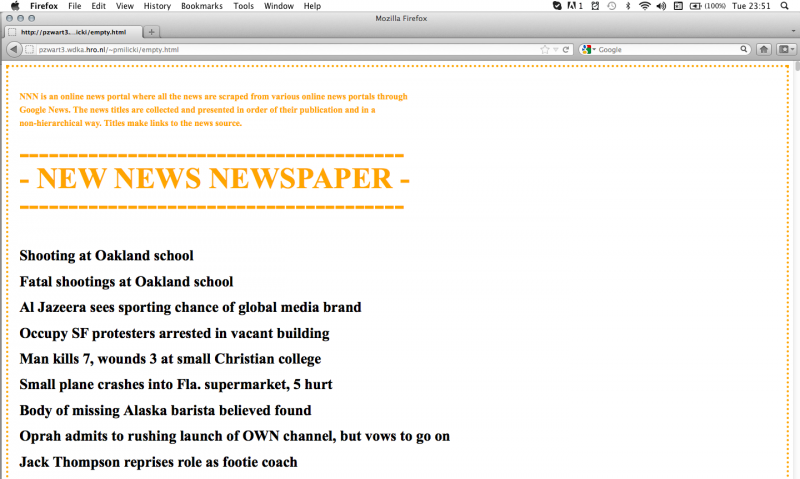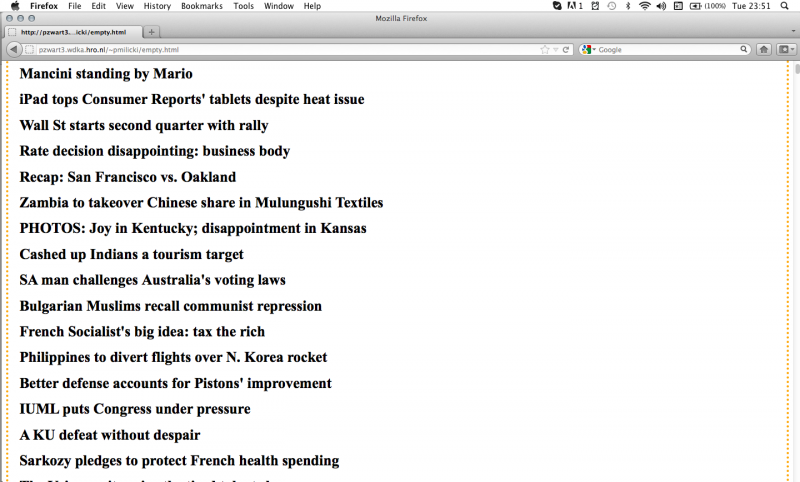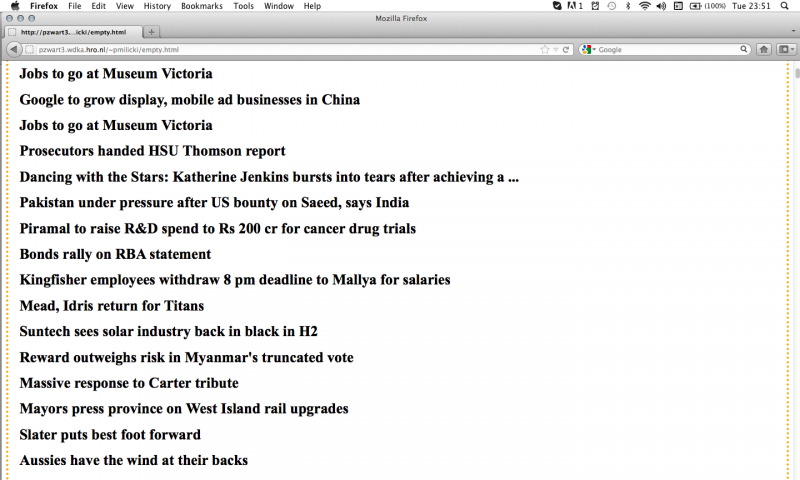Petra Milički, Trimester 2, 2012: Difference between revisions
m (→Description) |
No edit summary |
||
| (6 intermediate revisions by one other user not shown) | |||
| Line 1: | Line 1: | ||
Petra Milički, Trimester 2, 2012 | Petra Milički, Trimester 2, 2012 | ||
= | = New News Newspaper = | ||
== Description == | == Description == | ||
| Line 25: | Line 25: | ||
== Media == | == Media == | ||
[[File:petra1.png|800px|none]] | |||
[[File:petra3.png|800px|none]] | |||
[[File:petra4.png|800px|none]] | |||
== Essay == | == Essay == | ||
[[Media: essay_petra.pdf|Monumentalization in the Age of Digital Media]] | |||
[[Category: Trimester Projects]] | [[Category: Trimester Projects]] | ||
[[Category: 2011/2012]] | |||
Latest revision as of 14:04, 24 September 2012
Petra Milički, Trimester 2, 2012
New News Newspaper
Description
While researching on the subject of archive and memory in the age of new media, I got interested in how online news portals are dealing with the digital era and how it is effecting our individual and collective memory of certain events.
The emergent tension between the volume of material that can be made available online and the decreasing capacity of anyone to consume it or to make sense of it, together with the the real-time delivery practice is forcing (online) newspapers to interpret, sort and present huge amount of information in a legible and sensible way, according to some principles and design.
These interpretations and presentations depend on editorial policies and result with hierarchy of information sorted mostly by the news category and editors' sense of relevance.
Weather a certain news will be positioned on the home page or somewhere inside the website's structure, if it's going to be displayed in a big or small font size, or if it's going to have an image associated depends on the editorial policy of our chosen news provider.
Not only that the practice of articles presented in this way often overlook the relevance or potential of some stories and news events, but also shape the way we read, interpret and remember those narratives and the associated images.
Although the principles of forming collective memory by the digital media isn't as explicit as it was in the time of classical mass media, there is still an editorial politics that arranges and displays the news according to certain principals. Although we have a feeling of freedom to choose among hundreds of news sources, we develop certain habits that can, together with the media politics lead to a certain kind of opinion and memory formation.
The script that scrapes news titles from Google News allowed me to see them without any hierarchical order and without photo illustration. The script collects the news in order in which they come online and displays them in the same font style and size, one after another.
This affordance of the code I found interesting since while reading it I had to decide for myself if the news is 'important' or to which category it belongs to, instead of relaying on the news editorial to do it for me. This is why I decided to make a news web page that shows those news titles by importing these results in the same order I got them from the script.
I consider this to be an experiment or a beginning of something more concrete rather than a finished and meaningful project.



